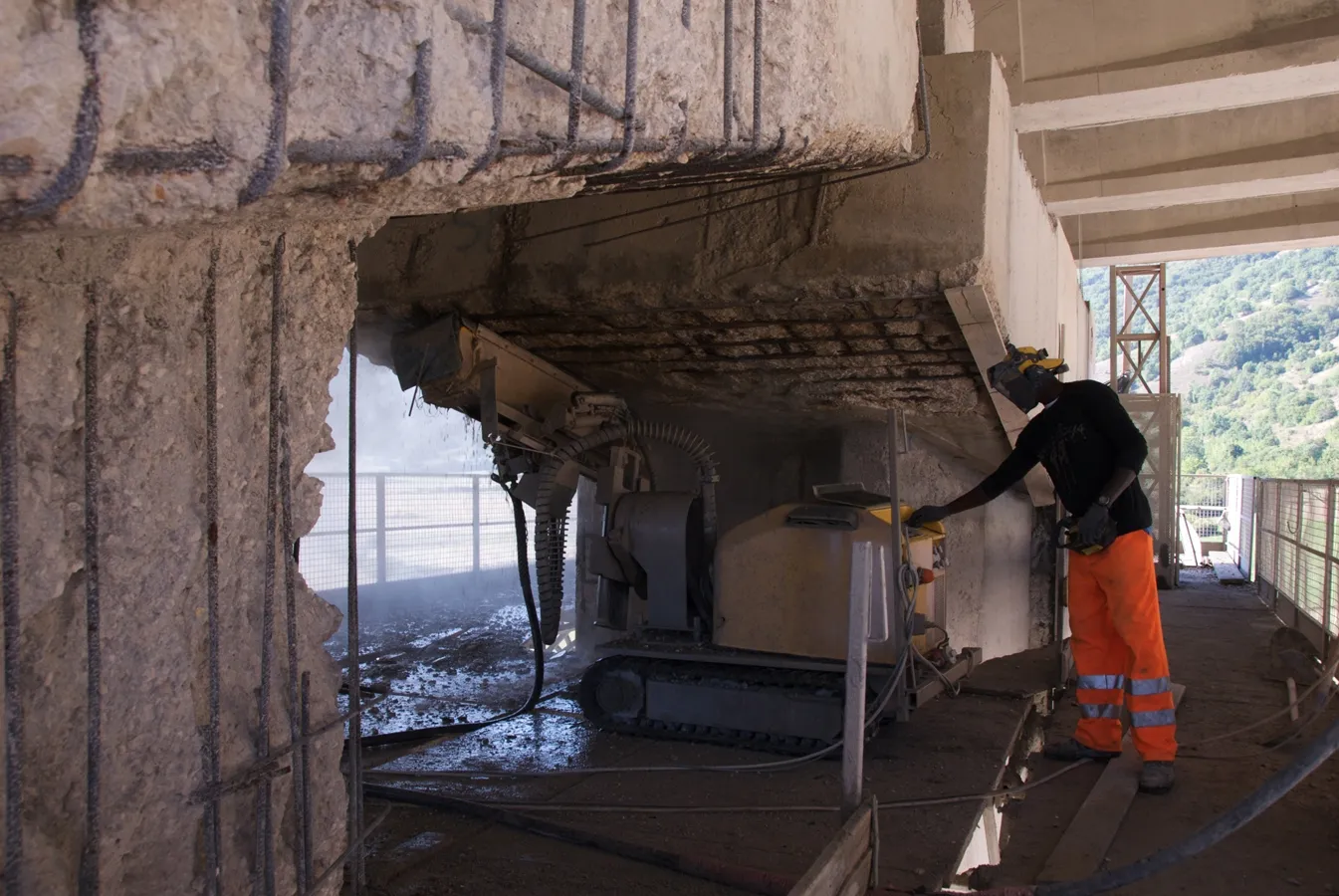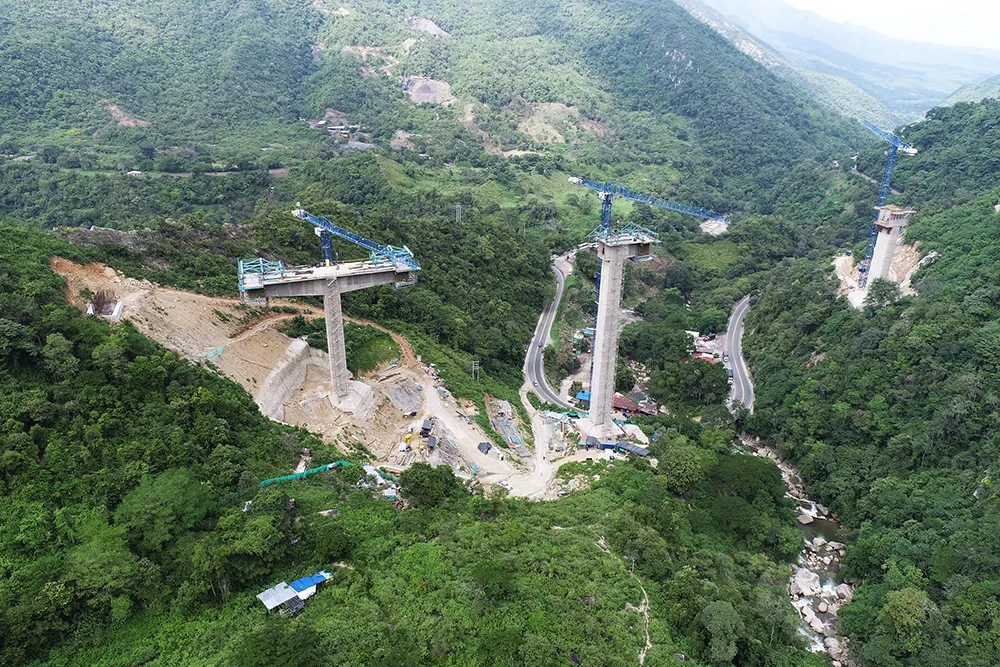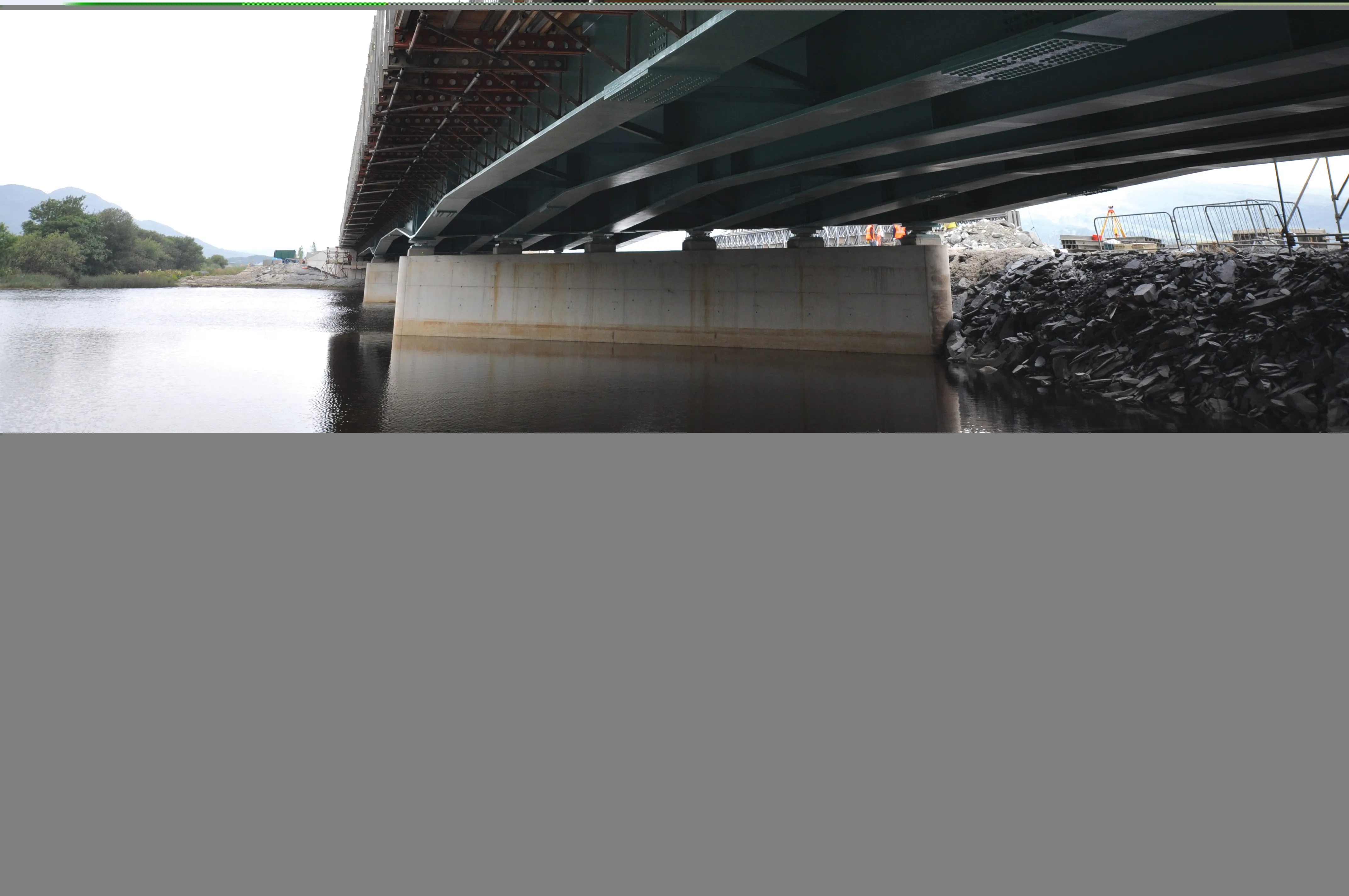The Czech government is investing heavily in upgrading and modernising the country's top-tier transportation infrastructure. This year alone, building works with a total investment of over E1.6 billion are planned or underway on the Czech motorway and main road network. Completion of the D8 motorway between the Czech capital Prague and Dresden in the east of Germany has a high priority, and as part of this large-scale project, the contracting consortium of SMP and Metrostav is erecting the 585m long Prosmyk
July 23, 2012
Read time: 3 mins

The Czech government is investing heavily in upgrading and modernising the country's top-tier transportation infrastructure. This year alone, building works with a total investment of over E1.6 billion are planned or underway on the Czech motorway and main road network.
Completion of the D8 motorway between the Czech capital Prague and Dresden in the east of Germany has a high priority, and as part of this large-scale project, the contracting consortium of SMP and Metrostav is erecting the 585m long Prosmyky Bridge across the River Elbe.
Being built using the balanced cantilever method, the bridge is intended to relieve congestion on the existing old Elbe bridge and is scheduled to be opened for traffic in 2009.
This ambitious construction project marks the world debut for the newly-developed203 Doka cantilever forming traveller.
Doka says that among the advantages of the rentable system are its modularity, which gives it maximum adaptability; its workplace-friendly design that uses optimised longitudinal trusses; an innovative drive concept using plastic slide bearings, and its standard of safety.
The Prosmyky Bridge spans the Elbe with a length of 585m, the box-girder superstructure resting on six piers, which are also being constructed using Doka Formwork Technology. The three spans of the superstructure are being cast by means of two Doka cantilever forming travellers in a total of 26 casting steps, each 15m wide and a maximum of 5m long. The widest span is 151m, giving the Prosmyky Bridge the longest span of any bridge in the Czech Republic.
Working outwards from a hammerhead, the segments are being poured and alternately post-tensioned on both sides of the piers. The cantilever forming traveller is fitted with Doka large-area formwork Top 50 elements. With sidewalls tapering from 7.5-3.5m; anchor blocks to be integrated in the middle of the carriageway slab; a quasi-hyperbolic radius of 325m, and the resulting change in the cross-section gradient from zero to 3.5%, the project makes some tough demands of the formwork solution, says Doka.
The Top 50 large-area formwork elements were delivered to the site by the Ceská Doka Ready-to-Use Service on a just-in-time (JIT) basis, pre-assembled with complete dimensional accuracy and ready for immediate use.
The cover-slab anchor blocks, positioned in the middle of the carriageway slab, present a particular challenge here, and the site crew is dealing with this by using specially made anchor-block box-outs, also fabricated by Ceská Doka's Ready-to-Use Service.
Doka's "innovative" cantilever forming traveller is dimensioned for casting 5m long bridge segments weighing up to 250tonnes, and this is sufficient to cover more than 90% of all balanced cantilever bridge projects anywhere in the world, says Doka.
"The Doka cantilever forming traveller's modular, flexible structure allows it to be used for forming straight, inclined and multi-cell box girder cross-sections without any time-wasting, cost-intensive modifications. It can also be used to form T-beams," says the company.
"As well as optimising the geometry and flexibility of the cantilever forming traveller by way of its modular structure, another main focus of the development effort, spread over several years, was on enhancing the workplace safety."
Completion of the D8 motorway between the Czech capital Prague and Dresden in the east of Germany has a high priority, and as part of this large-scale project, the contracting consortium of SMP and Metrostav is erecting the 585m long Prosmyky Bridge across the River Elbe.
Being built using the balanced cantilever method, the bridge is intended to relieve congestion on the existing old Elbe bridge and is scheduled to be opened for traffic in 2009.
This ambitious construction project marks the world debut for the newly-developed
Doka says that among the advantages of the rentable system are its modularity, which gives it maximum adaptability; its workplace-friendly design that uses optimised longitudinal trusses; an innovative drive concept using plastic slide bearings, and its standard of safety.
The Prosmyky Bridge spans the Elbe with a length of 585m, the box-girder superstructure resting on six piers, which are also being constructed using Doka Formwork Technology. The three spans of the superstructure are being cast by means of two Doka cantilever forming travellers in a total of 26 casting steps, each 15m wide and a maximum of 5m long. The widest span is 151m, giving the Prosmyky Bridge the longest span of any bridge in the Czech Republic.
Working outwards from a hammerhead, the segments are being poured and alternately post-tensioned on both sides of the piers. The cantilever forming traveller is fitted with Doka large-area formwork Top 50 elements. With sidewalls tapering from 7.5-3.5m; anchor blocks to be integrated in the middle of the carriageway slab; a quasi-hyperbolic radius of 325m, and the resulting change in the cross-section gradient from zero to 3.5%, the project makes some tough demands of the formwork solution, says Doka.
The Top 50 large-area formwork elements were delivered to the site by the Ceská Doka Ready-to-Use Service on a just-in-time (JIT) basis, pre-assembled with complete dimensional accuracy and ready for immediate use.
The cover-slab anchor blocks, positioned in the middle of the carriageway slab, present a particular challenge here, and the site crew is dealing with this by using specially made anchor-block box-outs, also fabricated by Ceská Doka's Ready-to-Use Service.
Doka's "innovative" cantilever forming traveller is dimensioned for casting 5m long bridge segments weighing up to 250tonnes, and this is sufficient to cover more than 90% of all balanced cantilever bridge projects anywhere in the world, says Doka.
"The Doka cantilever forming traveller's modular, flexible structure allows it to be used for forming straight, inclined and multi-cell box girder cross-sections without any time-wasting, cost-intensive modifications. It can also be used to form T-beams," says the company.
"As well as optimising the geometry and flexibility of the cantilever forming traveller by way of its modular structure, another main focus of the development effort, spread over several years, was on enhancing the workplace safety."









